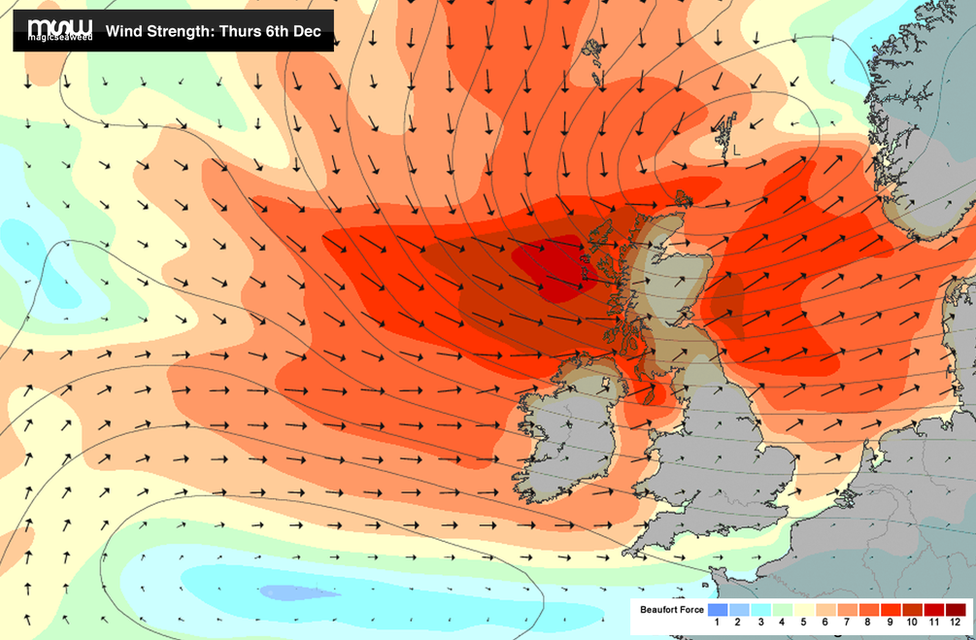Charts show gales and sea swells hitting UK
- Published
Charts used by surfers to find big waves have recorded this week's winter storm in vivid colour.

Website Magicseaweed.com has gathered data on the winds that were a major factor of Thursday's storm, and also the effect they have had since on wave sizes at sea.
The South Devon-based resource produces charts and swell models designed to help surfers pinpoint the best sites to enjoy their pursuit.
On Thursday the website recorded powerful winds as they were increased in speed by a low pressure passing over the north of Scotland, and a large high pressure to the south.
The wind speeds are estimated using the Beaufort Scale, a system that was devised in 1806 and describes the effects of wind, from zero - smoke rises vertically - to 12 - causing violence and destruction.
Magicseaweed.com also produced a chart on Friday showing the size of waves expected as this storm passes the UK and combines with another low pressure system in the Norwegian sea.
Ben Freeston, of Magicseaweed.com, said: "A strong jetstream to the north of the UK combined with a large high pressure system to the south resulted in a band of exceptionally strong winds crossing the UK on Thursday.
"For us, as surfers, the more interesting stage occurs as this storm system combines with another low pressure system on Friday in the Norwegian sea.
"This combined storm creates a region of strong winds stretching all the way from the coast of Holland to deep inside the Arctic circle.
"It's the strength and distance of this fetch that is forecast to create exceptionally large waves."
'Pretty wild'
Waves of more than 12m (40ft) have been forecasted for the centre of the storm and waves of more than 9m (30ft) could hit the western coast of Norway.
They are the highest waves that the website has forecast in the region based on records going back 15 years.
The swell hitting UK beaches will be smaller, with a forecast for waves of about 4.5m (15ft).
Scientists at the University of the Highlands and Islands (UHI) also monitor swell.
Information gathered by a buoy off South Uist in the Western Isles recorded wave heights of about 12m (39ft).
Arne Vogler, a senior research engineer at UHI, said conditions had been "pretty wild" but waves had not been as big as a previous storm event in February.

- Published6 December 2013
- Published7 December 2013
- Published6 February 2013